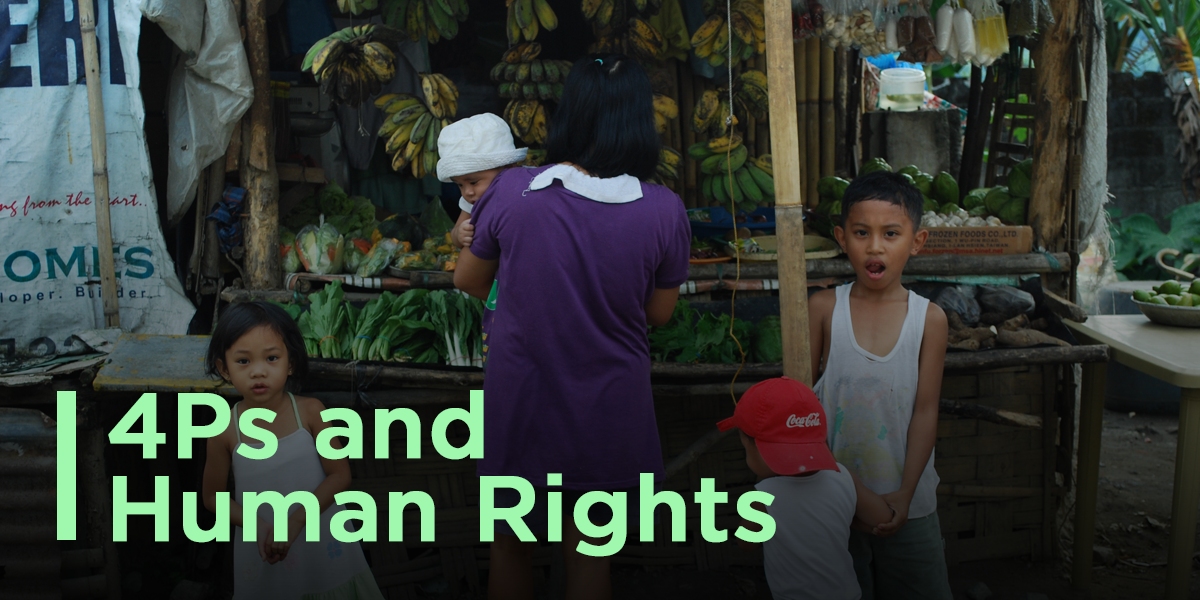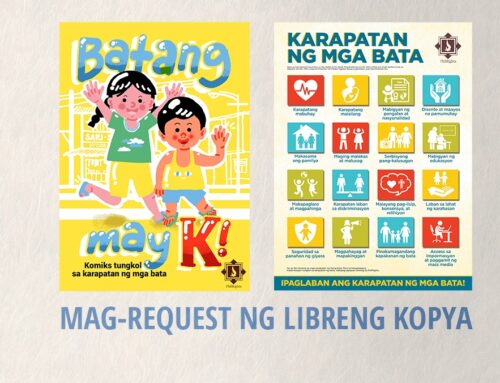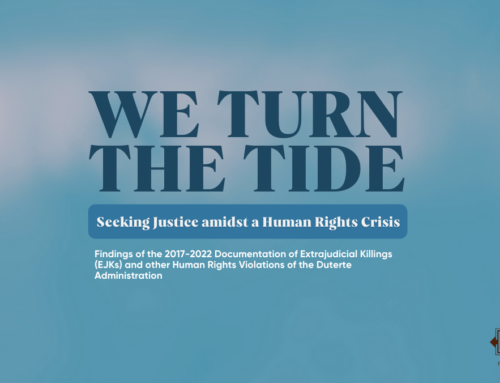by Isaac Linco
ABOUT THIS SERIES: It has been over 11 years since the inception of the Pantawid Pamilyang Pilipino Program (4Ps). This three-part series examines the ways it has or has not addressed the progressive realization of human rights of poor Filipinos, specifically their economic, social and cultural rights.
Part 2 summarizes the results of studies on the impact on children’s rights and women’s rights of the 4Ps program.
Part 2: 4Ps’ Impact on Children’s Rights and Women’s Rights
Given that the conditionalities of 4Ps center on education and health of children and pregnant women, the most studied aspects focus on the program’s impacts in these areas. Below is a summary of studies on the emerging impacts addressed by this program for these rights.
Children’s Right to Education
Studies are pointing towards a positive contribution of 4Ps when it comes to the improvement of children-beneficiaries’ enjoyment of the right to education. There was a recorded increase in the school enrollment of children beneficiaries from 3 to 15 years old. The program has also contributed to the improvement of other school indicators such as drop-out rate, cohort survival rate, average daily and monthly attendance, students and their parents’ participation rate in school programs and other projects, promptness in paying school and classroom dues, and pupils’ nutritional status. The school participation rate of children beneficiaries, 6 to 14 years old, was estimated to be higher than that of non-beneficiaries, at 96.3% and 93.3% respectively.
The cash transfers have also led to the increase of beneficiaries’ spending on their children’s education. Basically, the utilization of education services increased as it was incentivized for the beneficiaries by the program. Students were also shown to have become more motivated to attend school. As to how this increased motivation has affected the school performance of the beneficiaries, a study of beneficiaries who are junior high school students in Zambales indicate that while 4Ps has contributed to the improvement of study patterns and school performance of children beneficiaries, their overall performance is still not enough to surpass the standing of non-poor, non-beneficiary children.
In terms of reducing incidences of child labor, an Iloilo study showed that 4Ps has resulted in the reduction of child labor. However, a 2013 review of the first impact evaluation of the 4Ps program revealed that 4Ps showed no significant impact in the reduction of child labor across age and gender; decreases are only apparent in the number of working hours of child laborers.
Children’s Right to Health
Similar to improvements in the engagement of education services, there are also marked increases in the productivity of health services and families’ spending on health. A DSWD impact evaluation report in 2014 showed that children-beneficiaries have significantly higher rates of access to basic health services such as vitamin A and iron supplementation and deworming compared to non-beneficiaries. Health spending also increased, as in 2012 when barangays of 4Ps beneficiaries spent 34% more on medical expenses per capita than those who are not.
In turn, this increased utilization influenced the development of health-seeking behaviors among beneficiaries such as preventive health care for mothers and children, visiting health centers, and applying lessons in children’s nutrition learned from family development sessions and health center lectures.
This increase in health-seeking behaviors also led to improvements on several health indicators for children. These results include the improvement of the nutrition of children six to 36 months old, reduction of severe stunting, and positive perceptions on children’s health and nutrition.
There are, of course, pronounced limits to these positive developments. A study of household beneficiaries in San Pablo, Laguna concluded that a more diverse diet among beneficiaries did not necessarily lead to decreases in the number of malnourished children in the areas studied. In addition, DSWD’s 2014 impact evaluation report on the program also showed that the program did not lead to significant reductions in wasting, underweight and stunting among children-beneficiaries.
The increase of PhilHealth coverage among beneficiaries—an unintended positive outcome of 4Ps—also did not mean an increase in the actual utilization of healthcare coverage.
A 2012 study pointed out that the program is maternalist in approach, burdening the mother-beneficiaries with the bulk of responsibility
Women’s Rights
The program supported women and girls in the aspects of health, education and equality of participation. There is evidence of improvement in the preventive healthcare among pregnant women-beneficiaries in Iloilo. DSWD also reported in 2014 an increase in deliveries in health care centers and in the access to post-natal services. Also, higher live birth rates (7 out of 10) were registered among beneficiaries compared to the 5.5 out of 10 live births among non-beneficiaries and 6 out of 10 nationally.
In terms of education, a 2016 study showed that 4Ps has helped in narrowing the gap between male and female students in terms of school attendance. The cash transfers and set conditionalities also helped in reducing the burden to female children to contribute to the household income, giving them opportunities to prioritize their studies, according to a 2014 study conducted in Samar.
That said, the program remains rooted in traditional notions of womanhood. A 2012 study pointed out that the program is maternalist in approach, burdening the mother-beneficiaries with the bulk of responsibility for complying with the program.
Since the health and education programs are primarily focused on children, women’s needs outside of her pre-natal and post-natal care are not adequately addressed. These unchecked impacts of the 4Ps to women’s conditions, if left neglected, may contribute to the further disempowerment of women.
Right to Adequate Standard of Living
At the national level, the program is estimated to have reduced both total poverty and food poverty by 1.4% points each from estimated pre-program rates of 26.4% for total poverty and 12.5%for food poverty, according to a 2015 benefit incidence analysis by the World Bank.
Contrary to criticisms that the 4Ps would create a culture of dependency, a 2013 review found that the poor beneficiaries were able to spend their resources responsibly and understood the need to invest in the human capital of their children. The World Bank analysis also claimed that the 4Ps contributed to a 0.5% point decrease in national income inequality.
However, a 2017 report from the Commission on Audit (COA) cautions that there is still insufficient evidence to determine if the 4Ps directly caused the recorded decrease in poverty rates. Meanwhile, a 2014 study found that while the cash transfers led to an increase on the health, food, clothing and education expenditures of the household-beneficiaries, there is no significant impact on per capita total expenditures, especially on other basic needs.
At this stage, more studies are needed to confirm these results and isolate the impacts of the 4Ps from other factors. Looking at how 4Ps can contribute to more holistic interventions for poverty and inequality reduction remains a challenge.








